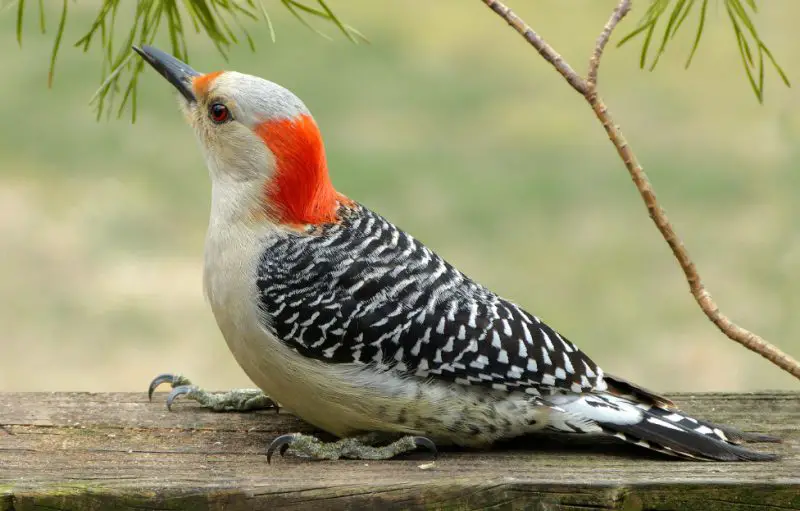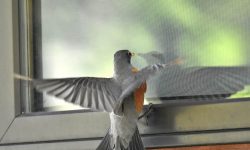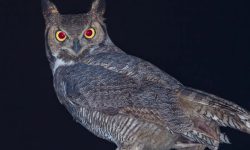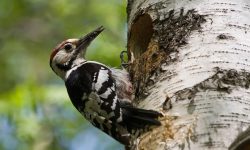Female woodpeckers have long fascinated birdwatchers, forest ecologists, and everyday nature lovers. While male woodpeckers often receive attention for their striking plumage and loud drumming, females play equally important roles in shaping the life and survival of their species. Their behaviors, nesting strategies, and subtle physical differences reveal a deeper story about how woodpeckers thrive across diverse ecosystems.
This article explores the most distinctive and surprising traits of female woodpeckers, drawing insight from species across North America, Europe, Asia, and beyond. You’ll learn how female woodpeckers choose nests, communicate with mates, raise their young, and defend their territories. Many of their habits are less well-known, making them particularly interesting for anyone who enjoys bird identification or wildlife observation.
Whether you’re a new birder or someone who has watched woodpeckers for years, understanding the female’s secret life adds depth to the way you interpret behaviors in the field. Below are ten unique facts that highlight just how remarkable these birds truly are.
1. Female woodpeckers often have subtler plumage, but the differences help them survive

Subtle coloration offers better camouflage
Female woodpeckers in many species lack the bright head markings or red crowns typical of males. This reduced coloration helps them remain discreet, especially during nesting season. Many species nest inside tree cavities, but females still spend time outside gathering food or inspecting potential nest sites. The more neutral tones help them blend into bark, branches, and shadows. This adaptation increases their safety when predators are nearby.
In species like the Downy Woodpecker or Hairy Woodpecker, the lack of a red patch makes females easier to overlook in dense wooded areas. That subtlety is intentional. It reduces attention from predatory birds such as hawks or owls. It also aids in protecting the cavity where she will eventually lay her eggs.
Not all species follow the same pattern, but across woodpecker families worldwide, females often evolve coloration that balances visibility among their mates with concealment from predators.
Plumage differences vary widely by species
Some species show only slight differences between the sexes, such as a missing red stripe or a reduced crown patch. Others have far more dramatic contrasts. Female Green Woodpeckers, for instance, have duller facial patterns compared to males, making them easier to identify at a distance. These distinctions help ornithologists track breeding patterns and territory behavior in the wild.
These sex-based color differences are examples of subtle sexual dimorphism. Unlike many songbirds, where males display vibrant colors to attract mates, woodpeckers rely more on vocalizations and drumming than on plumage. As a result, the female’s appearance is shaped more by practicality than display.
2. Female woodpeckers choose the nesting site, giving them major influence in mate selection
Females inspect cavities before mating
In many species, the male begins the process of excavating potential nesting cavities. However, the female makes the final decision on whether a cavity is suitable. She inspects the entrance size, depth, structural safety, and surrounding environment. If it does not meet her standards, the pair will abandon it and search for another. This gives females significant control over the nesting location.
The female’s selection process is highly instinctive. She evaluates whether the cavity can protect her eggs from temperature swings and predators. The cavity must also be large enough to allow both parents access but small enough to deter larger intruders such as raccoons or snakes. Her assessment ultimately affects the success of the breeding season.
Nest location impacts survival
A well-chosen cavity increases fledging success dramatically. Females often prefer dead or decaying trees because the soft wood is easier for males to excavate and helps regulate humidity. The surrounding area also matters. A nest near rich foraging grounds means the mother can spend less energy traveling to feed the chicks.
Different species have unique nesting preferences. Some prefer high elevations, others low branches near water, and some select live trees over dead ones. The female’s instincts dictate these decisions, revealing how influential she is in shaping the next generation’s chances of survival.
3. Female woodpeckers play a central role in regulating territory boundaries
They defend smaller territories within the pair’s range
Woodpeckers are territorial birds, but the female often defends a more specific zone around the nest cavity. She reacts quickly to intruding females, pushing them away through warning calls, wing flicks, or short chases. This territorial behavior ensures that no competing female can threaten her access to food or interfere with raising chicks.
Males normally guard the outer boundary of the territory. Females, on the other hand, focus on protecting the area most essential for reproduction. This division of roles helps the pair maintain a defensible and efficient home range during breeding season.
Defense intensity changes after chicks hatch
Before the eggs hatch, females may be less aggressive, relying more on camouflage and avoidance. But once the chicks emerge, mothers become significantly more defensive. Their instincts sharpen, and they respond quickly to predators such as squirrels, snakes, jays, and larger woodpeckers.
This shift in behavior highlights how adaptable female woodpeckers are. Their territorial strength increases when their offspring are most vulnerable, showing just how pivotal the mother is in protecting the family.
4. Female woodpeckers drum less often, but when they do, it carries important meaning
Drumming serves as communication rather than display
While males are famous for loud drumming used in courtship or territorial display, females drum less frequently. When they do, it typically signals information to their mate rather than serving as advertisement. A short drum roll may communicate her location, readiness to inspect a nest cavity, or warning of nearby threats.
The quieter drumming also prevents females from drawing predator attention. Many species rely on subtle communication rhythms that only their mates recognize. This makes drumming a precise and efficient tool during nesting season.
Drumming frequency changes by species and region
In some species, such as the Northern Flicker, females drum more regularly than previously believed. In tropical woodpecker species, environmental noise from other birds or mammals may increase the need for drumming communication. Female woodpeckers adapt their drumming to match ecological conditions, making the soundscape of each forest uniquely dynamic.
5. Female woodpeckers share incubation but often take more nighttime shifts
Nighttime incubation keeps eggs warm and hidden
Both parents share incubation duties, but females often take longer nighttime shifts. This is because their subtler coloration provides better camouflage in low light. The female’s presence in the cavity at night also helps maintain a stable temperature for the developing embryos.
Nighttime incubation requires patience and stillness. A female may sit inside the cavity for many hours without leaving. This long, quiet presence helps ensure that predators or rival woodpeckers do not detect the nest.
Daytime shifts are more flexible
During the day, the male often takes more turns sitting on the eggs. This allows the female to forage, maintain her strength, and scout for potential threats. The balance between them shows a high level of cooperation, with each bird taking on roles that suit their strengths.
This shared responsibility also increases the survival rate of the chicks. By allowing both parents to rest, feed, and monitor the environment, woodpeckers create a stable and efficient incubation strategy.
6. Female woodpeckers may produce multiple broods depending on the species
Some species raise two broods per season
While many woodpecker species raise only one brood per year, females of certain species—such as the Red-bellied Woodpecker and the Northern Flicker—may produce two broods in warm or resource-rich environments. This depends on weather patterns, food availability, and overall territory stability.
Producing multiple broods requires significant energy from the female. She must lay more eggs, feed more chicks, and maintain high health throughout the season. Only well-fed and experienced females can support such demanding reproduction cycles.
Brood number varies across regions
In colder climates, a single brood is typical because the warm season is shorter. In tropical regions, some females may lay eggs year-round depending on rainfall cycles. This reproductive flexibility demonstrates how adaptable female woodpeckers are to changing environmental conditions.
7. Female woodpeckers influence fledgling behavior more than males
Young birds look to the mother for feeding cues
After the chicks fledge, females often continue feeding them for several days or weeks. Young woodpeckers respond quickly to the mother’s calls, learning where to find safe foraging sites and how to extract insects from bark.
This early mentorship strongly affects survival. Chicks that follow the female learn faster because she leads them to productive feeding areas that she has used for years or seasons. Her knowledge of the territory gives fledglings an advantage in the wild.
Behavior shaping lasts beyond the nest
Female woodpeckers also guide fledgling flight patterns, hiding strategies, and reactions to predators. Her influence helps the young develop instincts that will carry them into adulthood. Males participate as well, but the female’s subtle communication style often has the greatest daily impact.
8. Female woodpeckers communicate through soft calls that humans rarely notice
Their vocalizations are quieter than those of males
Female woodpeckers rely more on soft, short calls that serve as contact signals. These calls help them stay connected to their mate, especially when inspecting cavities or feeding young. Their soft tones are harder to detect by humans, making female vocal behavior easy to overlook.
These quiet calls reduce risk during nesting. Loud vocalizations would attract predators, so females evolved subtle variations that work effectively within short distances.
Soft calls carry emotional information
Researchers have observed that female vocalizations shift depending on their mood or the presence of threats. A rapid series of chirps may encourage the male to return with food. A sharp, low call can signal danger. These patterns reveal a rich communication system hidden within the forest soundscape.
9. Female woodpeckers invest heavily in chick development through selective feeding
They bring softer, nutrient-rich foods to young chicks
Females often begin feeding their chicks with softer foods like larvae, ants, and beetle grubs. These insects provide high protein and moisture, which help chicks grow rapidly in the first days after hatching. The female’s instinct to select specific prey directly influences early development.
Some species also feed partially digested food to very young chicks. This helps them process nutrients more efficiently. Over time, the female gradually shifts to larger insects, preparing the chicks for life outside the nest.
Feeding patterns shape chick growth rate
Broods with attentive and experienced females often grow faster and develop stronger flight muscles before fledging. Females also regulate how much each chick receives, sometimes favoring weaker chicks until they catch up. This nurturing behavior increases survival rates in the wild.
10. Female woodpeckers adapt impressively to human environments
They use urban parks and backyard habitats
Female woodpeckers are often early adopters of human-altered environments. They investigate fence posts, utility poles, wooden sheds, and dead garden trees for potential cavity sites. Their willingness to explore new habitats helps them survive as forests shrink.
Backyard bird feeders also attract females, especially those offering suet, nuts, or high-protein pellets. These resources help mothers maintain energy during breeding season.
They tolerate disturbance better than expected
Females sometimes nest surprisingly close to human activity. While males remain more wary, females often show resilience by balancing caution with practicality. Their adaptability has allowed woodpecker populations to remain stable in many suburban areas.
FAQs About Female Woodpeckers
How can you tell a female woodpecker from a male?
In many species, the female lacks a red patch or has a smaller one. She may also have duller facial markings. Behavioral cues, such as quieter drumming, also help distinguish her.
Do female woodpeckers drum on trees?
Yes, but far less frequently than males. When they drum, it’s usually for communication rather than display.
Do female woodpeckers excavate nests?
Both parents help excavate, but males often do more of the digging. However, the female decides whether the cavity is acceptable.
Are female woodpeckers territorial?
Yes. They defend the immediate nest area, especially once eggs or chicks are present.
Do female woodpeckers stay with their chicks longer than males?
In many species, yes. Females often guide fledglings and teach them where to feed.
Are female woodpeckers more aggressive during breeding season?
They can be. Once the chicks hatch, females become more protective and alert.
What foods do female woodpeckers prefer?
They enjoy insects, larvae, ants, beetles, nuts, fruits, and suet. Their diet shifts based on season and breeding needs.
Do female woodpeckers produce more than one brood a year?
Some species do, especially in warm climates or areas with abundant food.
Do female woodpeckers migrate?
Migration varies by species. Some females migrate long distances, while others remain year-round.
Is it harder to spot a female woodpecker?
Yes. Their subtler coloration and quieter behaviors make them less noticeable in the wild.
Conclusion
Female woodpeckers may be quieter and more understated than their male counterparts, but their contributions to the survival of their species are profound. They carefully choose nesting sites, incubate eggs, protect their young, and guide fledgling behavior with remarkable intelligence. Their adaptability allows them to thrive in forests, suburban neighborhoods, and even heavily developed areas.
Understanding the female’s unique traits deepens our appreciation of woodpecker ecology. From subtle plumage differences to complex communication patterns, each behavior plays a vital role in maintaining healthy populations. The lives of female woodpeckers reveal a world of strategic decision-making, resilience, and natural beauty that often goes unnoticed but is essential to the survival of these iconic birds.
If you observe woodpeckers in your area, take time to watch for the female’s quiet but powerful presence. You may notice behaviors and patterns that tell an entire story about the hidden life of these remarkable birds.






